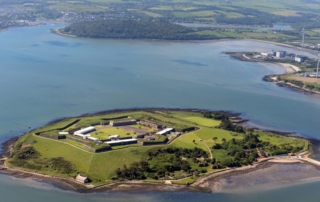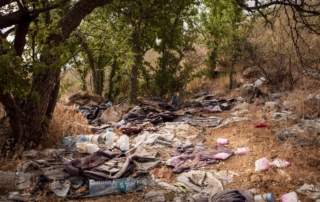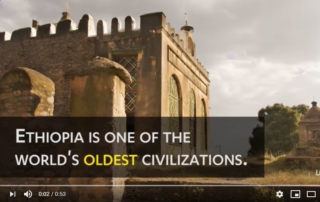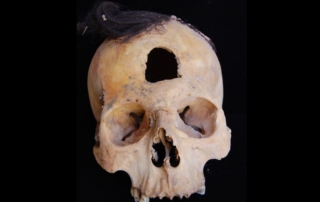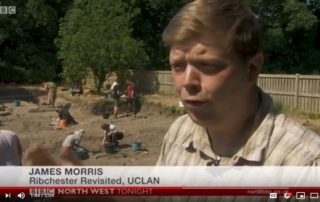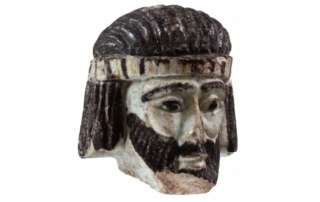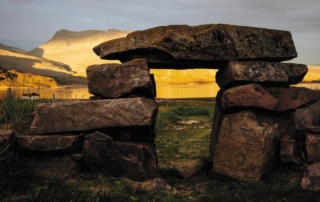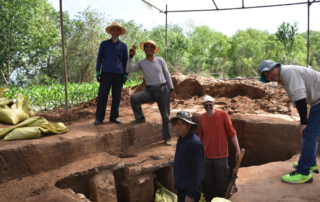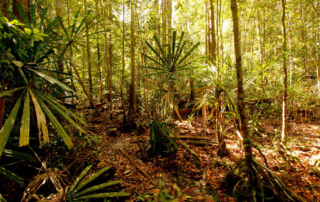CNN Travel: Spike Island: Unraveling the mysteries of ‘Ireland’s Alcatraz’
A star-shaped fortress atop a picturesque island off the southwest coast of Ireland once housed one of the world's biggest prison populations. While today Spike Island welcomes boatloads of tourists -- much like Alcatraz in San Francisco Bay or Robben Island off the coast of South Africa -- in Victorian times it was a place that many never left, with more than 1,000 prisoners dying there in less than four years. In an attempt to learn more about the men who perished on this prison island, bioarchaeologist Barra O'Donnabhain began excavating the convict graveyard in 2013. Over the past five years, O'Donnabhain and his team have uncovered some of the mysteries buried on Spike Island -- including a grizzly procedure long ago carried out [...]
National Geographic: Immigration Archaeology: What’s Left At Border Crossings
De León's research reveals how that migration has changed over time. ... Using archaeology to study the recent past, anthropologist and National Geographic Emerging Explorer Jason De León seeks to reveal human stories and new insights into the controversial topic of illegal border crossings. August 2018
UCLA: Saving Ethiopia’s cultural gold
In the Shire region of northern Ethiopia, UCLA professor Willeke Wendrich and her team of archaeologists enlist members of the local community to help preserve cultural heritage. Feb 22, 2017
Live Science: Trophy Heads and Mummies Discovered in Ancient Peruvian Pits
The nearly 1,500-year-old remains of at least 60 people and six trophy heads have been discovered in deep pits in Vitor Valley in southern Peru. Due to the arid climate, some of the remains became naturally mummified, their flesh surviving without the need for artificial mummification. By Owen Jarus August 9, 2018
BBC: Ribchester Revisted Project – BBC North West News
BBC North West News - YouTube Jul 11, 2018
Live Science: A Face from the Bible May Appear in This Tiny Sculpture
"A tiny but intricately carved sculpture of what may be the head of a biblical king, dating back over 2,800 years, has been discovered at the ancient city of Abel Beth Maacah in northern Israel." By Owen Jarus June 07, 2018
Associated Press: Walrus bones provide clues to mystery of lost Viking colony
"Clues to the mystery of why Viking colonies in Greenland flourished and fell have been found in the DNA of medieval walrus bones housed in more than a dozen European museums." Associated Press Aug 8, 2018
Smithsonian Magazine: Why Did Greenland’s Vikings Vanish?
"Newly discovered evidence is upending our understanding of how early settlers made a life on the island — and why they suddenly disappeared" By Tim Folger SMITHSONIAN MAGAZINE MARCH 2017
Harvard Magazine: Digging Deep into Chinese History
"[The Tao River Archaeological Project] was begun in 2012 to investigate technological changes in Northwest China during the late third and early second millennia B.C.E., a period during which new materials, like metals, were introduced to the region, along with new domesticated animals and plants (including cattle, sheep, goats, and horses, and wheat and barley)—all seemingly at different times and places." by Dr. Rowan K. Flad 7.11.17
Oxford Brookes University: New population of the secretive bay cat discovered on Borneo
"Scientists are one step closer to understanding the secretive bay cat after capturing camera trap footage of species in a forest where it was thought it did not exist." Friday, 28 April 2017


